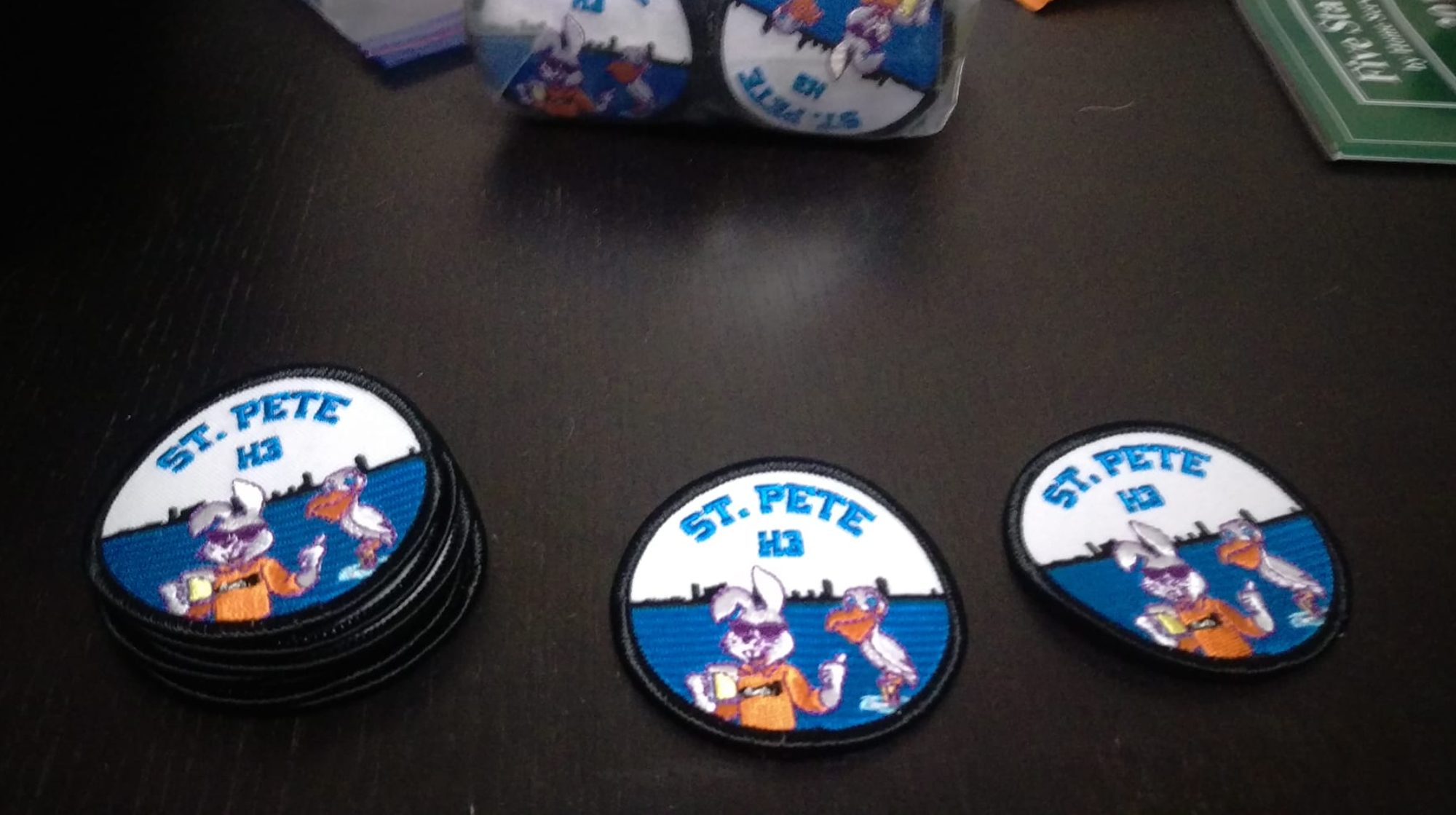Before laying the trail, make sure that both you and your Hare partner(s) are all using the same marking conventions. Otherwise you just may confuse the Hounds and get them lost – and into an ugly mood.
Don’t screw with the pack by making the trail difficult to find… screw with the pack by where the trail goes. It’s far better to lay a trail that’s easy to find and a son-of-a-bitch to traverse, than vice-versa.
SPH3 TRAIL TIPS
- Use lots of flour. Once again, use lots of flour. This can’t be emphasized enough.
- Ideally, Hounds should be able to see the next mark from the last.
- Hash marks should be placed about twenty-five yards or so apart, and never be more than fifty.
- When “bushwhacking” (shiggy), make marks very close together.
- Consider alternate marking when bushwhacking, such as surveyor/engineer tape or toilet paper.
- Mark your trail with environmentally friendly substances. That means no spray paint, and remember that after the Hash you must remove anything you used that the rain won’t easily eradicate (e.g., surveyor/engineer tape).
- Sidewalk chalk is great… but only when it isn’t raining.
- Don’t get too clever with your marking medium. Animals just might find certain things irresistible (like Fruit Loops cereal) and eat your marks.
- If you change direction, mark the change with either a check or a Hare arrow.
- There is no requirement to lay false trails from a check, but there must be a true trail.
- End your false trails with a false trail mark, especially on pre-laid trails where a “blow job” (false trail without a false trail mark) make little sense.
- Three flour marks after a check means true trail. After three Hash marks it is not Kosher to lay a false trail mark. A check (which may include false trails), on the other hand, is quite appropriate.
- Not getting caught is a matter of cleverness (and luck), not speed. Don’t double back – you’re bound to run into a short cutting bastart (SCB). Most live Hares are caught by SCBs, not FRBs!
- Checks are critical because they keep packs together and Front Running Bastards (FRBs) confused.
- Ideally, the Dead Fu*king Last (DFLs) should reach the beer-check & On-In within five minutes or so of the FRBs.
- If the slower Hashers say the run was a cake-walk while the FRBs ran their asses off, you’ve done a great job.
- On the other hand, too many checks can be quite annoying. In this matter, trail-laying is more of an art than a science. Unfortunately, you can only learn the proper balance from experience, both as Hare and Hound.
RAIN
- Lay your marks larger than normal.
- Avoid gutters, where flour is sure to get washed away.
- Try to find places to lay trail where the flour won’t get wet, if possible.
- Flour will stay around better if you lay it in clumps rather than just throwing it on the ground. If you squeeze the clump and set it down it will hold together better.
- In rain, flour sticks to wood (trees, fences) better than grass, smooth surfaces or sidewalks.
- Be extra careful when laying critical marks (checks, arrows, etc.) because Hounds have a hell of a time figuring out what to do in the absence of trail marks.
- Don’t bother with chalk, as it always gets washed away in the rain.
- If rains after you’ve laid your trail, you really should recheck it before the Hash starts.
- Snow (Florida Hashers, disregard!)
- Color your flour. Carpenter’s snap line powered chalk works well – just be sure to use enough to achieve a distinctly bold color.
- Lightly colored flour tends to blend with the snow, making Hash marks difficult – if not impossible – to see.
- Hashing in deep snow takes lots of physical effort and your trail should take this fact into account and not be too long.
Humper. BEER SOUP FOR THE HASHER’S SOLES: The Hash House Harrier Guidebook (Kindle Locations 585-665). S&B Publishing. Kindle Edition.

